Have you heard of Ramie before? If not, that is okay because ramie is quite an underrated fabric among all. It has a linen-like fiber classified as cellulose. No matter how Ramie is an alternative to synthetic fabric, it remains always a fabric with a good impact on the environment.
Table Of Contents
What is Ramie Fabric?
Ramie fabric refers to a natural fiber just like linen and bamboo. It comes from the old East and is a perfect alternative to silk. Since Ramie has cellulose features, it is obtained through the extraction process. The complex extraction process markets the fabric as expensive and premium.
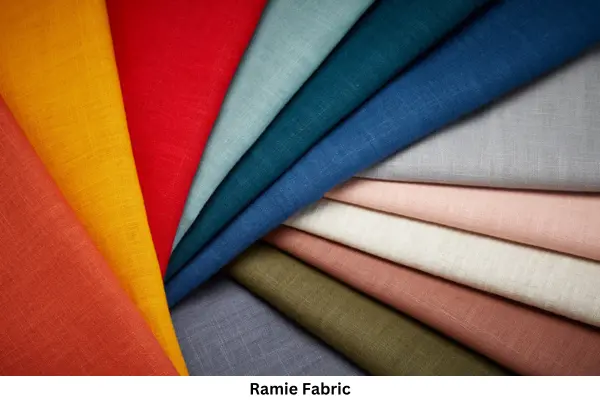
It is China's original fabric, hence it is known as China Grass. Meanwhile, Malaysian original green ramie is also a source of fiber.
What is Ramie Fabric made of?
Ramie fabric is made of cellulose fiber, produced from the Chinese cultivated plant Chinese nettle stalks. 2 types of Ramie fibers are there, white and green ramie are the main two.
Both plants grow in China and Malaysia. Ramie fabric is an eco-friendly material thanks to its special nature. Ramie fabric is harvested twice to thrice. The fabric can be extracted up to 6 times. The fiber is extracted from the plant’s bark.
Ramie Fabric Manufacturing Process
The manufacturing process of Ramie fabric is as follows in steps:
-
Harvesting: Stems are cut or bent, stripping the protective bark layer.
-
Fresh Decortication: While moist, machines remove rough outer bark to prevent hardening.
-
Drying Ribbons: The stripped bark, now ribbons, is quickly dried to preserve quality.
-
Scraping and Scouring: The remaining outer bark, gums, and pectin are scraped away for pure fibers.
-
Cortex Refining: Cleaned and dried bark yields the raw material for spinning.
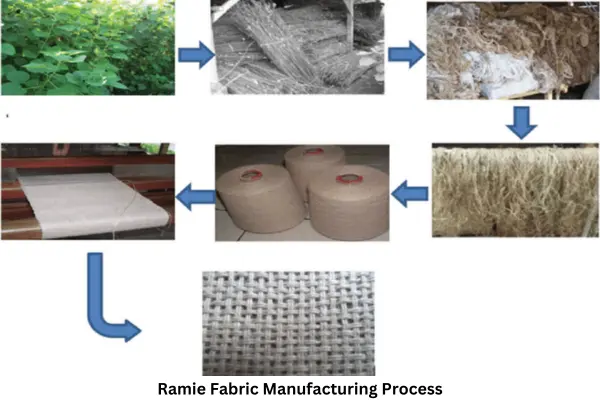
-
Degumming: Chemical or enzymatic process dissolves unwanted materials, freeing fine fibers.
-
Fiber Blending: Ramie is combined with natural fibers like cotton or hemp for strength and texture.
-
Yarn Spinning: Degummed and blended fibers are twisted into strong, versatile yarn.
-
Weaving and Knitting: Yarns are transformed into fabrics with diverse characteristics.
Types of Ramie Fabric
Ramie fabric has two types. They are:
-
White Ramie: Chinese plant has heart-shaped leaves. Their undersides are white and dense. Little hairs give them a shiny and silvery look.
-
Green Ramie: Green ramie is available in the Malay Peninsula. Plants there are more suitable. The plants have more minor leaves, the underside green.
Properties of Ramie Fabric
|
Fabric Name |
Ramie Fabric |
|
Fabric Composition |
Ramie plant |
|
Fabric Breathability |
High |
|
Fabric Durability |
Medium |
|
Fabric Stretchability |
Low |
|
Fabric Shine |
Shiny |
|
Fabric Drape Ability |
Moderate |
|
Heat Retention Ability |
Low to Medium |
|
Water Resistant ability |
Absorbent in nature |
|
Washing Temperature |
40 degree celsius washing temperature |
|
Fiber Density |
1.50 to 1.55 |
Characteristics of Ramie Fabric
Behind Ramie fabric being the strong one, some features make it worth having in your wardrobe. For instance:
-
Holds Shapes: Ramie can hold shapes, but not colors. Ramie is not good at dyeing.
-
Lustrous: Ramie hardly wrinkles. Hence, it holds its silky luster.
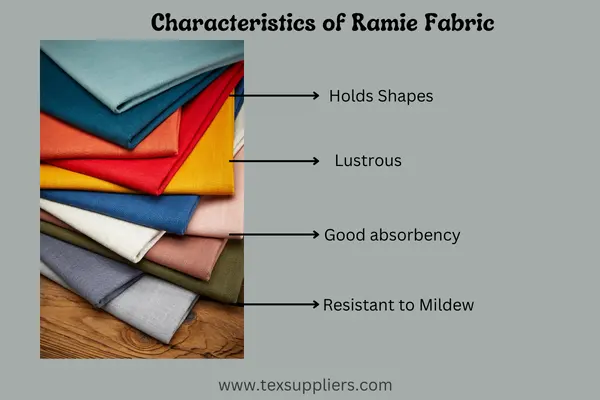
-
Good absorbency: Ramie’s absorbency is similar to flax in terms of density, and absorbency.
-
Resistant to Mildew: Ramie is bacteria-resistant. Also, it is resistant to mildew, light, and attack of insects.
Application of Ramie Fabric
Ramie fabric has a variety of uses. These are
-
Textile Industry: Clothing, sewing threads, home furnishing.
-
Clothing: Suits, handkerchiefs,
-
Industry: Cordage, ropes, twine production
-
Agriculture: Natural pesticide
-
Traditional application: mats, baskets.

FAQ
-
What is the difference between Ramie and Linen?
Ramie and linen fabrics are natural fibers. They share similarities but there are key differences as well. For instance, Linen is made from flax plants, meanwhile, Ramie is a rhea plant and China grass is made. While Linen has a thick and irregular texture, Ramie is fine and smoother.
Conclusion
Ramie, a strong plant friend from the East, has been around for ages! It's like a tiny shield, keeping away yucky chemicals and bugs. When it gets wet, it becomes even stronger! Ramie turns into fancy fabric for towels, tablecloths, and more. It's good for the Earth and keeps its shape, no wrinkles allowed! So next time you see something comfy and kind to the planet, it might just be ramie, your new plant pal!





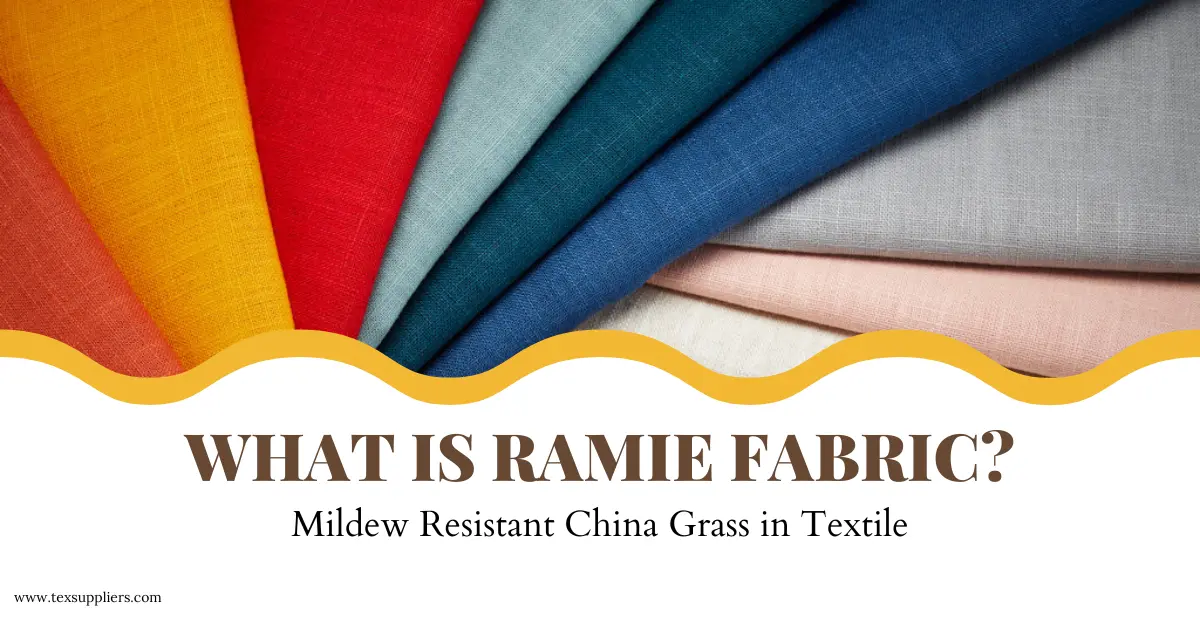

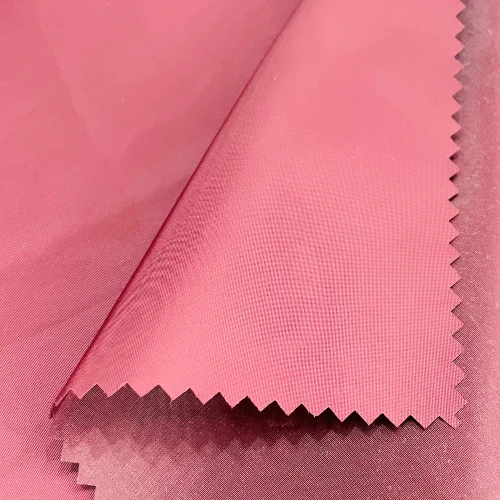
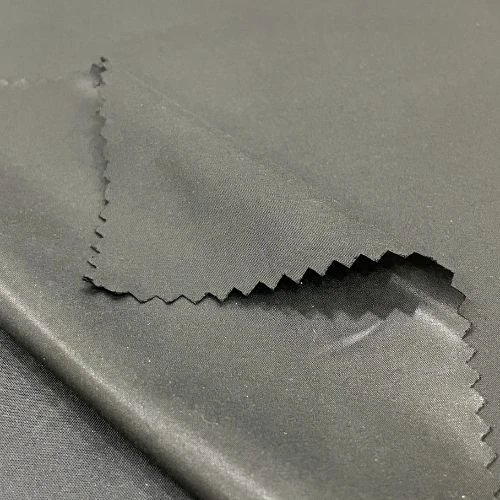
.webp)





Comments - 00
Leave A Reply
Thanks for choosing to leave a comment.